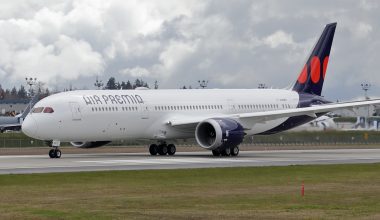
Aborted Take-Off and Landing
13th December, 2015- It was meant to be a joyous day for Qatar Airways. An Airbus A350-900 XWB was making its historic debut flight journey away from New York to Doha carrying staffs and journalist. But, suddenly a nerve wrecking incident occurred to an aircraft where it aborted its take off as it sped up and came to a screeching halt on the runway leaving all the passengers completely shaken and nervous. One of the Passengers on board, Zach Hoing, Editor-in-Chief of the “The Points Guy” website and organization described the incident as the “most memorable flight” of his life. Later, after the investigation it was found that the aircraft aborted its take off because the computer system inside an aircraft decided the runway distance available at JFK was just not sufficient enough for A350-900 XWB to take-off. Two hours later, the aircraft used another runway and smoothly completed its take-off and made a successful 12-hours flight to Doha.

So, What is Aborted take-off and landing?? And why and how often are they done?? Aborted take-off or Rejected Take-Off (RTO) and Aborted landing are simply the phenomenon where the aircraft ready for take-off or landing suddenly decide to abort and not to take-off or land anymore due to various reasons. Aborted Landing is also widely known as “go-around” process. The term “go around” is simply derived as in aircraft hovering around just to make proper accurate adjustments that are essentially required for landing. Initially, a landing aircraft will first join the circuit pattern and try to prepare for landing in an orderly fashion. If pilot reckons some obstacle for the safe landing, then the pilot can simply fly back up to circuit height, and complete another circuit.
Out of various reasons for aircraft to abort take-off, the major reason for the aborted take-off is due to technical failures. The engine failure due to compressor stall is one of the majorly occurring technical failures resulting in aborted take-off. Other reasons might be the insufficient runway allocation, improper calculations, bad weather condition, unusual bird’s activity and so on. Similar to take-off, landing also have various reasons to abort. There are many landing- unfavorable conditions such as like too much wind, something on the runway, bad runway lighting or maybe even pilot just being uncomfortable with the “sight picture” out the window. In all these cases, pilots make communication with ATC and take the appropriate action whatever required.
The aborted take-off is not quite frequent. Generally the technical advancement had increased so much that the preliminary calculations are thoroughly done before operational use of any aircraft. So, only in the extreme cases as described above come to action, the aborted take-off takes place. If it’s during the landing phase, the frequency of “going-around” usually depends on the size and nature of the aircraft. Small aircraft go around frequently. In the training, pilots are trained to take no risk whatsoever whenever something doesn’t feel right during the landing process. Commercial aircraft go around a lot less often. The main reason for that might be because fuel is expensive and airlines are not quite eager to spend money that easily unless it is extremely critical. Though, it’s really not a bad thing, going around. No one blames pilot for being safe. So, private pilots are trained to do it all the time.
According to the stats, the long route pilots, such as of Boeing 747 fleet, may be faced with an RTO decision only once in 20 years. On the other hand, the pilot in DC-9, short-haul fleet (with the average of 30 takeoffs per month), may see an RTO every 7 years. Despite the number, there can still absolutely be no margin for negligence. None of the aircraft should make take-off until they’re completely prepared for the case where they might actually have to abort the take-off.
The general rule for the multi-engine aircraft to abort take-off is that if the aircraft has not reached the critical or decision speed, they have the luxury to abort the take-off as the runway would be sufficient for aircraft to stop and bring to complete halt. If the decision speed is exceeded though, then the aircraft must continue its take off and attempt to land again unless there is some serious doubt on aircraft ability to fly.

The decision or critical velocity is already calculated for the multi-engine aircraft during their manufacture. For takeoff, it is generally taken as 105-108% of the stall velocity at given runway condition. But in the case of Single Engine Aircraft, there is no option for pilot other than bringing aircraft to halt by using brakes or reverse thrusts.
Well, technology has taken a huge leap forward these days. As mentioned earlier, Boeing 747 has to make RTO decision only once in a 20 years which is really great stats in terms of aircraft safety. The automatic calculations are made by the high-tech computers these days. The required calculations for the critical velocity, approach velocity required, runway calculations, weight allowed for the specified runway, etc. has made the take-off and landing phenomenon significantly easy and safe. Also, the continuous communication with ATC gives the pilot an appropriate guidance regarding whether to abort an aircraft or not. So, there may and let’s hope there comes a time when the advancement in technology completely eradicate the phenomenon of aborted take-off and landing. Till then-for ensuring the safety of passengers and aircraft, there should absolutely be no hesitation in aborting the take-off and landing. After all-Remaining Alive is all that matters!
Article By; Bibek Poudel
4th Year Mechanical Engineering
IOE Pulchowk






